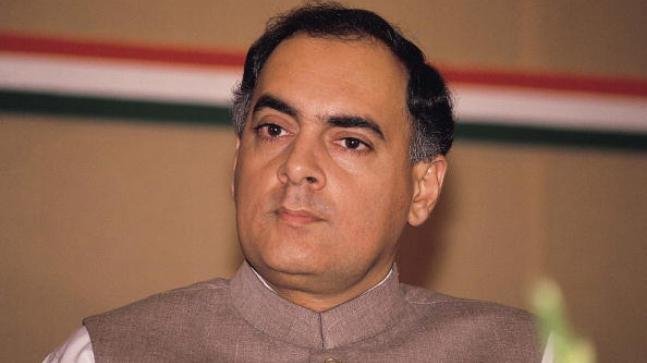On May 21, 1991, former Indian Prime Minister Rajiv Gandhi was killed in a suicide bombing in Sriperumbudur, Tamil Nadu, India. The attack was orchestrated by the Liberation Tigers of Tamil Eelam (LTTE), a Sri Lankan militant group, under the leadership of Velupillai Prabhakaran. This tragic event shocked the world and remains a pivotal moment in South Asian history. To understand why the LTTE targeted Rajiv Gandhi and Prabhakaran’s role in the assassination, we must examine the historical context and the LTTE leader’s motivations.
Background: The Sri Lankan Civil War
The LTTE, also known as the Tamil Tigers, was a separatist group fighting for an independent Tamil state, Tamil Eelam, in northern and eastern Sri Lanka. Founded in 1976 by Velupillai Prabhakaran, the LTTE aimed to address the grievances of Sri Lanka’s Tamil minority, who faced discrimination from the Sinhalese-majority government. By the 1980s, the conflict had escalated into a brutal civil war, with the LTTE emerging as the dominant Tamil militant group under Prabhakaran’s iron-fisted leadership.
India’s Involvement and the IPKF Conflict
India became involved in the Sri Lankan conflict in the 1980s, partly due to its large Tamil population in Tamil Nadu, who sympathized with Sri Lankan Tamils. Initially, India covertly supported Tamil militant groups, including the LTTE, by providing training and resources. However, in 1987, under Prime Minister Rajiv Gandhi, India signed the Indo-Sri Lanka Accord to resolve the conflict by granting Tamils greater autonomy. As part of the accord, India deployed the Indian Peace Keeping Force (IPKF) to Sri Lanka to enforce peace and disarm the LTTE.
The LTTE, led by Prabhakaran, rejected the accord, as it fell short of their demand for full independence. The group clashed with the IPKF, accusing Indian forces of atrocities during their operations. The IPKF mission (1987–1990) became a bloody conflict, with significant losses on both sides. Prabhakaran viewed India’s intervention as a betrayal and an occupation of Tamil territory, holding Rajiv Gandhi personally responsible for the accord and the IPKF’s actions.
Prabhakaran’s Role in the Assassination
Velupillai Prabhakaran, as the supreme leader of the LTTE, was the mastermind behind Rajiv Gandhi’s assassination. His role was central in planning and authorizing the attack, driven by a mix of revenge, strategic calculation, and ideological commitment. Here’s how Prabhakaran was involved:
1. Motive of Revenge: Prabhakaran harbored deep resentment against Rajiv Gandhi for the IPKF’s operations, which killed many LTTE fighters and civilians. He saw Gandhi as the architect of India’s intervention, which humiliated the LTTE and weakened its position. The assassination was a way to settle scores for what Prabhakaran perceived as a personal and political betrayal.
2. Strategic Decision to Prevent Future Interference: By 1991, Rajiv Gandhi was no longer India’s Prime Minister but was campaigning for a political comeback in the upcoming elections. Prabhakaran feared that a re-elected Gandhi might resume India’s involvement in Sri Lanka, potentially sending troops again or supporting the Sri Lankan government against the LTTE. Ordering the assassination was a calculated move to eliminate this threat.
3. Planning and Execution: Investigations revealed that Prabhakaran personally approved the assassination plot. The LTTE’s intelligence wing, led by figures like Pottu Amman, meticulously planned the attack under Prabhakaran’s direction. The suicide bomber, Thenmozhi Rajaratnam (also known as Dhanu), was chosen for the mission. On May 21, 1991, during a political rally in Sriperumbudur, Dhanu approached Rajiv Gandhi, pretending to garland him, and detonated an explosive belt, killing him, herself, and 14 others. The operation’s precision and secrecy reflected Prabhakaran’s strategic oversight and the LTTE’s sophisticated network.
4. Ideological Statement: Prabhakaran saw the assassination as a bold message to India and the world that the LTTE would not tolerate external interference in its fight for Tamil Eelam. By targeting a high-profile figure like Rajiv Gandhi, Prabhakaran aimed to demonstrate the group’s resolve and capability, even if it meant alienating potential supporters.
Aftermath and Prabhakaran’s Legacy
The assassination drew global condemnation and led to the LTTE being labeled a terrorist organization by India and later by countries like the United States, Canada, and the European Union. Indian authorities investigated the plot, confirming Prabhakaran’s direct role through intercepted communications and confessions from captured LTTE operatives. Several conspirators were convicted, but Prabhakaran evaded justice, continuing to lead the LTTE until his death in 2009, when Sri Lankan forces defeated the group, ending the civil war.
Prabhakaran’s decision to assassinate Rajiv Gandhi backfired in many ways. It alienated India, a potential ally for the Tamil cause, and strengthened India’s support for the Sri Lankan government. It also damaged the LTTE’s international reputation, isolating the group diplomatically. However, for Prabhakaran, the assassination was a reflection of his uncompromising commitment to Tamil Eelam, even at the cost of extreme measures.
Why It Matters Today
Rajiv Gandhi’s assassination, orchestrated by Velupillai Prabhakaran, remains a stark reminder of how personal vendettas and political conflicts can lead to devastating consequences. Prabhakaran’s role highlights the dangers of radical leadership driven by rigid ideology. For global readers, the event underscores the complexities of ethnic conflicts and the ripple effects of foreign interventions. While the Sri Lankan civil war ended in 2009, the assassination continues to shape India-Sri Lanka relations and the Tamil diaspora’s struggle for justice and reconciliation.
Note: This article is based on historical records and investigations into the LTTE’s actions, as understood from publicly available information up to July 2025.







































